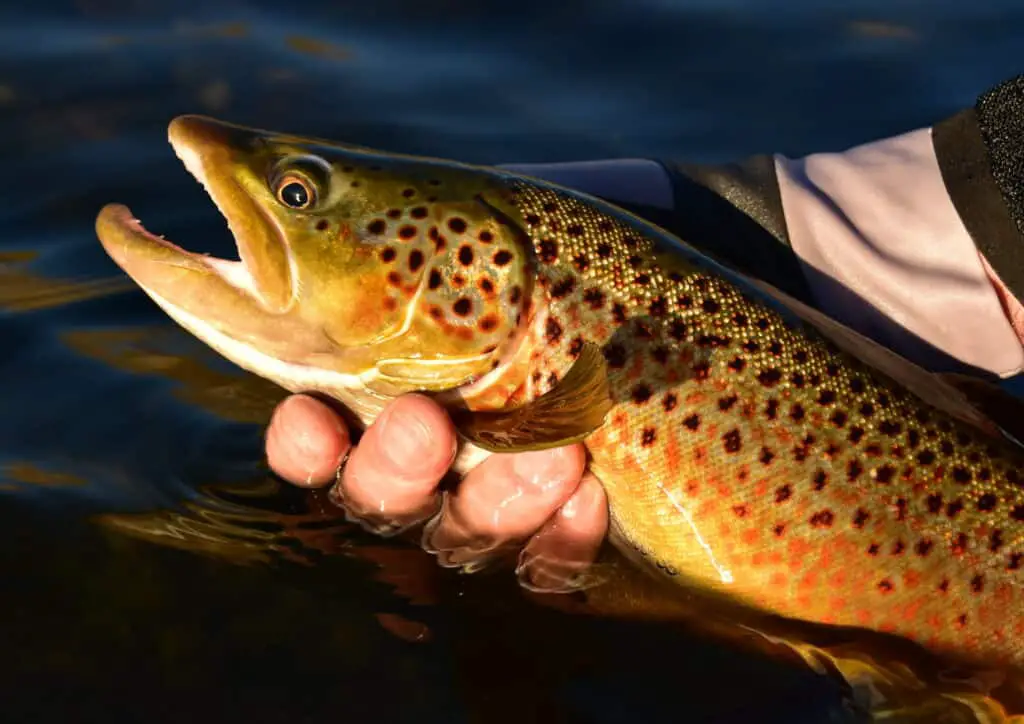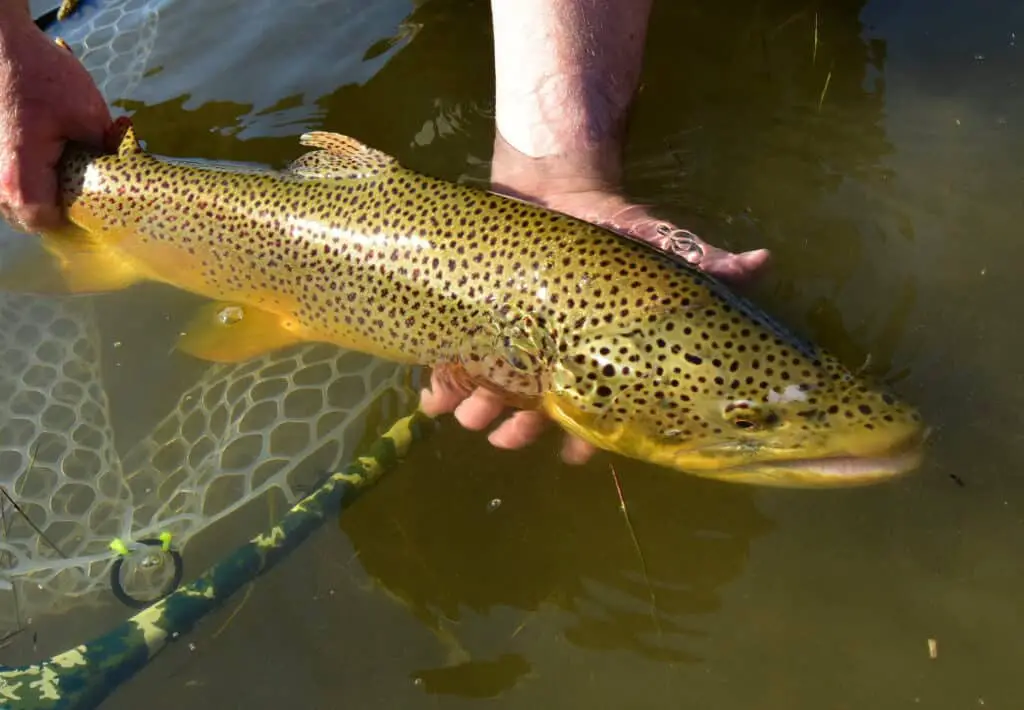Wet and dry flies are used for two different fly fishing techniques specifically designed for fishing at different depths in a body of water.
Wet flies are made weighted to allow the fly to fully submerge into the water, whereas dry flies are meant to rest atop the water in imitation of insects landing.
How Wet Flies Work
Wet flies are designed differently than dry fly lures. These flies are geared towards catching fish that are more likely to be found within deeper water bodies.
They are weighted with a highly hydrodynamic design that quickly falls in the water to allow both the current and angler to imitate aquatic insects underwater. These flies are meant to mimic drowned insects, small baitfish, crustaceans, worms, squid, and many more aquatic insects.
When to Use Wet Flies
Wet flies are generally much more likely to yield a catch than dry fly fishing, making it the right choice for fly fishing beginners. The reason for this is due to the challenges that dry fly fishing presents when casting.
With wet flies designed to sink, how you land your fly onto the water is less likely to scare away the fish at the bottom, and thus not as important an aspect as it is with dry fly fishing.
For experienced anglers looking to decide between the two techniques, certain conditions would make wet fly fishing the better choice for your fishing excursion.
Weather conditions will be necessary for deciding if wet fly fishing will meet your needs. Naturally, fish are inclined to travel deeper into bodies of water on hotter days.
They do this to cool off, whereas fish will more likely be found closer to the surface on colder and less sunny days, making wet fly fishing less than ideal for colder weather.

Wet Fly-Fishing Technique
For wet fly fishing, you will want to cast upstream to allow the current to help make the fly move in a more natural imitation of an aquatic insect.
This will allow the fly to travel facing the current’s direction so that a fish is more likely to strike at it as it travels downstream rather than looking as though it is traveling upstream.
Once your line loses its slack and passes your position in the stream, the direction your fly is facing will be upstream and should be recast.
How Dry Flies Work
Dry flies work in a completely different manner than wet flies. These flies are larger than wet flies; this allows them to float with more ease and better imitate an insect landing atop the water.
These flies are meant to appear as mayflies, flying ants, damsels, caddis, sedges, dragonflies, and midges.
When to Use Dry Flies
Weather will play a role in deciding when to use dry flies. Colder weather days will have fish move closer to the water’s surface and away from its more frigid depths.
Generally, dry fly fishing is ideal to use during both sunrise and sunset, as hatching is more likely to occur during this time. Hatching refers to when adult insects pop up on the surface of the water before flying off.
These insects make for ideal dry fishing conditions, as fish will naturally be drawn to this food source. If you notice ripples on the surface of the water, you may even see trout as the feast.
Dry Fly Fishing Technique
Dry fly fishing presents a challenge when it comes to landing your lure naturally onto the water. This will take time and practice to master. If your fly lands incorrectly onto the water, you are liable to scare off your catch.
You will want to cast your line by stopping your cast with your rod tip high to prevent this. By doing so, you will ensure a tight line to avoid an unnatural gathering of fishing line around your lure.
Dry fly fishing leaves little room for correction, as any adjustments to the lure not naturally made by the water’s current could frighten or deter fish from biting. You will also want to keep your dry fly lure from dragging.
Dragging occurs when the line grabs tension from the current and causes the fly to cut through the water rather than float on the water. If your line drags, you will want to use your rod to reposition your line against the current, known as mending.
Even this takes a skilled hand and risks scaring off the fish.

Upstream Cast
Like wet fly fishing, you can cast your dry fly upstream and allow the stream to casually and naturally float the fly towards the desired location, mending your line as needed.
The first thing a fish should see is the fly, so be sure to allow just enough fishing line so that your line won’t overlap the fish.
Downstream Cast
Downstream casts can also be used to ensure that fish will not see your fishing line before they see the fly. With this technique, you will want to either feed your line as it travels downstream to supply it with enough slack to prevent dragging your fly or performing a pile cast.
Pile casts are performed by casting upwards into the sky and stopping your follow-through short so that the slack falls to the water and allows the fly to dead drift through above the water.
If you choose to feed your line, you will want to make sure you do not allow too much slack to occur so that you can hook your catch when it strikes.
Conclusion: A Difference In Approach
Although wet and dry flies are both used in fly fishing, the different approach and physical makeup of the lure themselves vary greatly.
Which fishing technique you decide to use will depend on many factors, from personal knowledge, skill, and preference to weather conditions and time of day.


